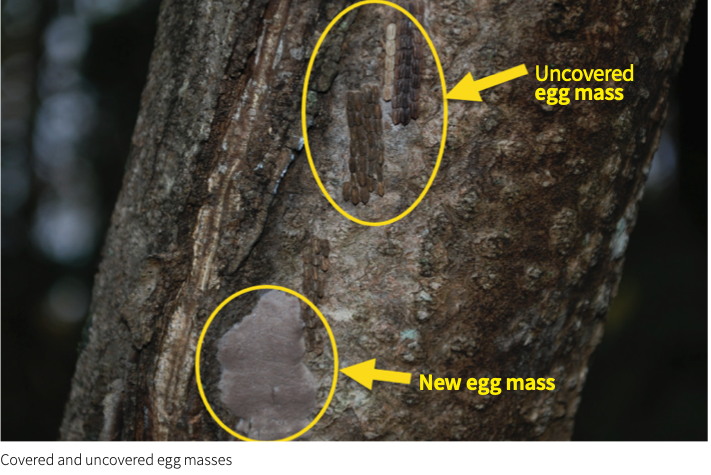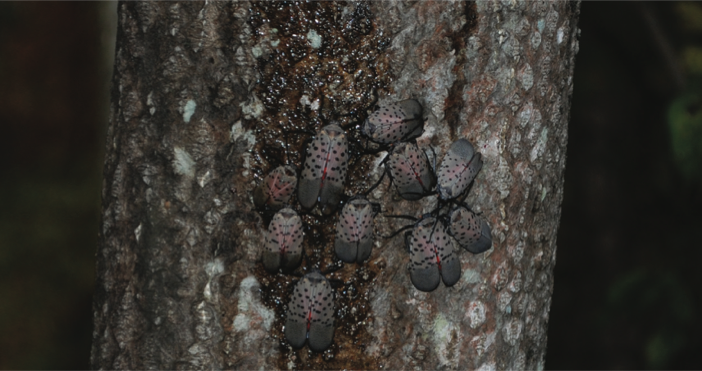Ag News
Invasive spotted lanternfly detected in Georgia
Posted on Nov 21, 2024 at 13:08 PM
On Nov. 14, the Georgia Department of Agriculture (GDA) received confirmation from the USDA that the first detection of Spotted Lanternfly (Lycorma delicatula or SLF), an invasive planthopper that poses a serious risk to the state's fruit and forest sectors, was made in Fulton County. The SLF was found on Oct. 22 and confirmed by USDA’s Animal and Plant Health Inspection Service (APHIS). The first confirmed detection of the Spotted Lanternfly was made in Pennsylvania in 2014 and has spread to 17 states, with Tennessee and North Carolina being the closest to Georgia.
“The Spotted Lanternfly, an invasive pest that poses a serious threat to our state’s No. 1 industry, has been detected for the first time in Georgia,” said Agriculture Commissioner Tyler Harper. “We urge anyone who sees the Spotted Lanternfly in their area to document it, report it, and kill it. Controlling the spread of the Spotted Lanternfly is our best strategy for safeguarding Georgia’s agriculture industry, and we are asking for the public’s help in this effort.”

Spotted Lanternfly/Photo courtesy of Ga. Dept. of Agriculture
To combat this threat, Georgians are encouraged to take immediate action if they spot a SLF:
1. Take a clear picture of the pest.
2. Kill it.
3. Report your sighting using our online reporting tool at www.gainvasives.org/slf/report/.
For residents seeking professional treatment options, the GDA offers lists of licensed pesticide professionals who can provide assistance with applications.
Search for Pesticide Contractors
Search for Pest Control Companies
Local UGA Cooperative Extension offices can offer advice and options to control Spotted Lanternflies.
About Spotted Lanternflies
Although the SLF does not pose a direct threat to human health, it feeds on a variety of plants, including grapes, hops, stone fruits, and hardwood trees. Its feeding weakens these plants and produces a sticky, sugary fluid that encourages the growth of sooty mold, further harming crops. While the SLF prefers the Tree of Heaven (Ailanthus altissima), it can significantly impact many other species.
The SLF overwinters in its egg stage, laying eggs from September to November, which then survive through the winter months until hatching in the spring when temperatures warm up. The adult lanternflies die with the first hard frost, but their eggs remain viable throughout the winter. This stage of their life cycle is expected to take place over the coming weeks.

Newly laid egg masses (holding 30-50 eggs) resemble wet, gray putty before turning dull and brown, mirroring a smear of cracked mud. The 1-inch long egg masses can be seen in fall, winter, and spring on a variety of smooth surfaces, such as trees, bricks, stones, fences, grills, equipment, and vehicles.

Spotted lanternflies (both nymphs and adults) frequently gather in large numbers when feeding. They're easiest to spot at dusk or at night as they migrate up and down the trunk of a plant. During the day, they tend to cluster near the base or canopy of a plant, making them more difficult to see.

Spotted Lanternflies feed on a tree trunk. /Photo courtesy of USDA APHIS
When spotted lanternflies feed on plants, they leave behind a sticky, oozing residue called honeydew. This substance attracts other insects, causes mold growth, and further hurts plants.
For more information about the Spotted Lanternfly and how to identify it, please visit the Georgia Department of Agriculture’s website at https://agr.georgia.gov/spotted-lanternfly.
- Categories:
- Tags: